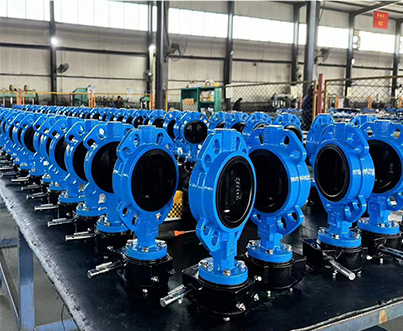
- Call Us
- +8618633052223
- njhdvlz@163.com
Aug . 20, 2024 02:27 Back to list
Exploring Key Manufacturers of Butterfly Valves in the Industry
The Role of Butterfly Valve Factories in Modern Industry
Butterfly valves are essential components in various industrial applications, serving as a mechanism to regulate and control the flow of liquids and gases. Their design, characterized by a rotating disc that functions as a closure element, offers a simple yet efficient way to manage flow with minimal pressure drop. The production of butterfly valves is carried out in specialized factories that use advanced technologies and methodologies to ensure high-quality output. This article explores the significance of butterfly valve factories, the manufacturing processes involved, and their impact on various industries.
The Importance of Butterfly Valves
Butterfly valves are used across a wide range of sectors, including water treatment, chemical processing, oil and gas, and HVAC. Their lightweight design, quick operation, and reliability make them a preferred choice in many applications. The demand for efficient and durable valves has led to the emergence of specialized butterfly valve factories that focus on producing these critical components. With the increasing complexity of industrial processes, the need for customized butterfly valves has also risen, driving innovation and development in manufacturing practices.
Manufacturing Processes
The manufacturing of butterfly valves involves several key steps, beginning with the selection of quality materials. Factories typically use materials such as stainless steel, carbon steel, and various alloys to ensure durability and resistance to corrosion. The choice of material often depends on the specific application and the environment in which the valve will operate.
Once the materials are selected, the manufacturing process includes machining, where raw materials are cut, shaped, and formed into the desired specifications. Precision machining is crucial, as even minor discrepancies can lead to performance issues. Factories employ advanced CNC (computer numerical control) machines for this purpose, ensuring that every valve component is made to exact standards.
butterfly valve factories

After machining, the components undergo further processes such as welding, assembling, and testing. The assembly stage requires skilled labor to ensure that each valve is assembled correctly, facilitating proper functionality. Factories often implement strict quality control measures, including pressure testing and leak testing, to guarantee that the valves will perform reliably under specified conditions.
Technological Advancements
In recent years, advancements in technology have revolutionized the butterfly valve manufacturing process. Automation and robotics have improved efficiency and precision, reducing human error and production time. Additionally, the implementation of simulation software allows manufacturers to analyze valve performance under various conditions before actual production, minimizing costs associated with design changes.
Moreover, the rise of Industry 4.0 has led factories to integrate smart technologies into their operations. This includes the use of IoT (Internet of Things) devices for real-time monitoring of production processes, predictive maintenance, and inventory management. These innovations not only enhance productivity but also contribute to sustainability by minimizing waste and energy consumption.
Impact on Industries
The impact of butterfly valve factories extends beyond manufacturing; their products play a crucial role in enhancing efficiency and safety in industrial operations. By providing reliable flow control, these valves help prevent leaks and spills, which can lead to environmental hazards and costly downtime. Consequently, industries that rely on butterfly valves experience improved operational efficiency and compliance with safety regulations.
In conclusion, butterfly valve factories are pivotal in ensuring the reliable supply of high-quality valves that meet the diverse needs of modern industries. Through advanced manufacturing techniques, stringent quality control, and innovative technologies, these factories contribute significantly to the safety, efficiency, and sustainability of various industrial processes. As industries continue to evolve, the role of butterfly valve manufacturers will undoubtedly become even more critical in supporting operational excellence.
-
Stainless Steel Sanitary Butterfly Valve for Hygienic Flow Control
NewsJul.30,2025
-
High-Performance Groove Butterfly Valve for Easy Installation
NewsJul.30,2025
-
High-Quality 2 Inch Butterfly Valve for Precise Flow Control
NewsJul.29,2025
-
Double Flanged Short Pattern Butterfly Valve for Reliable Flow Control
NewsJul.29,2025
-
High Quality Wafer Check Valve Factories – Reliable Manufacturer & Supplier
NewsJul.29,2025
-
Stainless Steel Sanitary Butterfly Valve for Hygienic Applications
NewsJul.28,2025